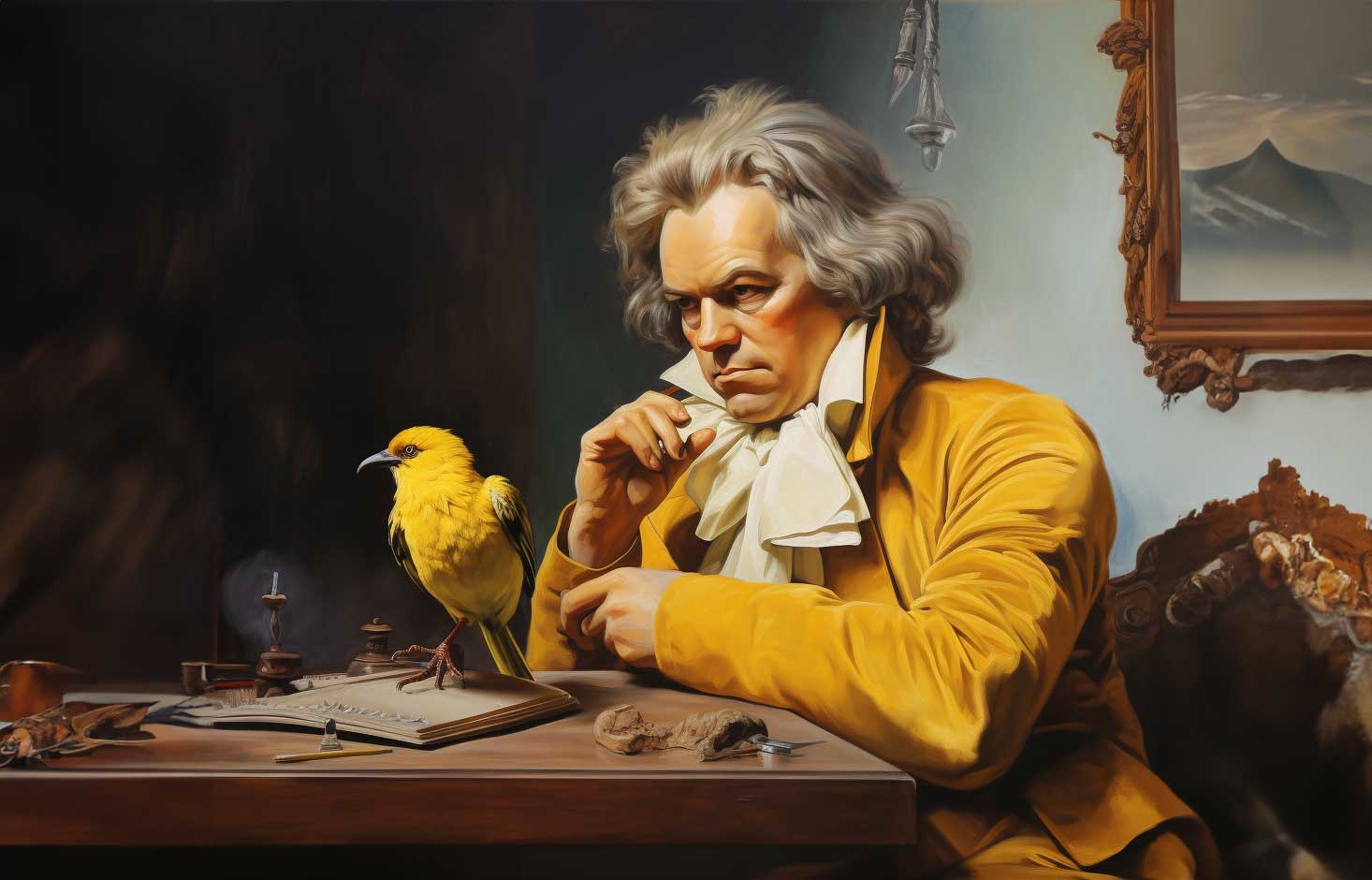5 things you may not know about Beethoven's 5th
July 13, 2023 |
Author: Dominic Nicholas |
Category: Discover |
Repertoire Guides

Beethoven and a yellow hammer bird.
Like Beyoncé, Adele or Madonna, Beethoven's 5th Symphony is so familiar it's known simple by it's first name: 'The Fifth'. But here are 5 facts about the piece you may not know:
1. Beethoven’s 6th Symphony was premiered before his 5th
Beethoven was notoriously self-critical, constantly revising his works. He also tended to work on many pieces a the same time. His 5th symphony was begun around the time he finished his 3rd, also known as the
Eroica Symphony and took him
four years to complete. By the time it was ready, he had also completed his
6th Symphony, known as the ‘Pastoral’. The two works were premiered on 22nd December 1808 at the Theatre an der Wien in Vienna. The 6th Symphony, however, was first on the programme.
2. The reception was frosty (literally)
The freezing December temperatures of the premiere did not provide ideal conditions for either audience or musicians. In addition to this, the orchestra was thrown together at the last minute and not well rehearsed—in one of the pieces during the programme, the
Choral Fantasy for choir, piano and orchestra, Beethoven had to stop and restart the performance after a mistake by one of the musicians.
The programme was also four hours in total, testing the patience of an audience already struggling with the chilly temperatures. As a result critical reaction was muted after the performance, though this gradually changed over the following years, beginning with a rave review by critic ETA Hoffmann after the score was published in 1810.
3. Was the Symphony inspired by a small yellow bird?
The opening bars of the Symphony introduce us to that famous ‘dah-dah-dah-duuuuum’ figure, which then permeates the whole of the first movement and, indeed, the whole Symphony. Beethoven’s secretary Anthon Schindler claimed that Beethoven, on playing the theme to him, remarked that ‘Thus Fate knocks at the door!’ This story, lent poignancy by the fact that Beethoven was already struggling with deafness during the composition of the work, has become the most widely accepted interpretation of this theme. Beethoven’s pupil
Carl Czerny, however, said that Beethoven told him that the theme was suggested to the him by "a yellow-hammer's song, heard as he walked in the Prater-park in Vienna."
4. V is for victory

The "V for victory" sign, shown by raising two fingers was used as part of an allied campaign in World War II, Winston Churchill being the most famous exponent of this hand gesture. Coincidentally the short-short-short-long main theme of Beethoven’s Symphony has the same pattern as a "V" in morse code, whilst the number 5 is represented by a "V" in Roman numerals. This, combined with the heroic nature of the symphony, led to it sometimes being referred to as the ‘Victory Symphony’ during and after the War. Additionally, the ‘dah-dah-dah-dum’ figure, played on drums was used by the BBC to preface some broadcasts during the War.
5. Très romantique
Beethoven, the first freelance composer primarily concerned with self expression, is justifiably considered the initial composer of the Romantic era. The Symphony also ushers in this era by setting the trend for increasingly larger orchestras—it is one of the first such works to include trombones and the very first to include a contrabassoon and piccolo. Whilst it is not the longest of Beethoven’s symphonies (the earlier Eroica, for example lasts longer in performance), it continues the trend towards longer works that also characterises symphonic writing in the Romantic period. The work also established a classic Romantic trope, that of the journey from darkness towards light, here characterised by the stormy C Minor opening movement and journey towards the triumphant C major of the final moment.

